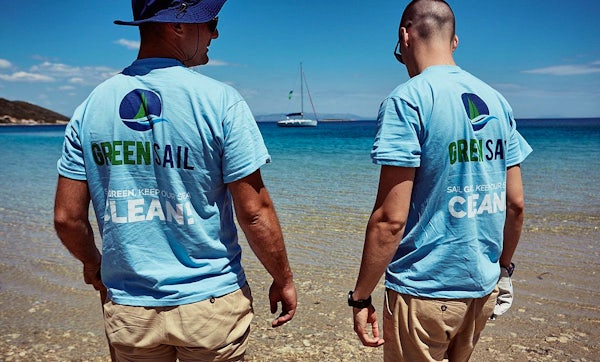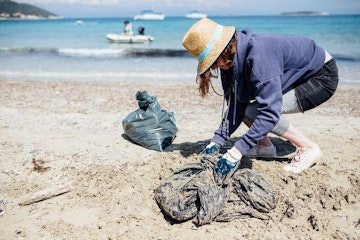Top 10 Most Impactful Actions Taken to Protect the Environment in the Past Decade

Humans affect the environment in both positive and negative ways. It’s undeniable that there are plenty of negative things happening to the environment at the hands of humans, but we also have to be aware that there are changes currently happening that are beneficial and should be celebrated. Thanks to the dedication of researchers, scientists and organizations, we’ve seen an influx in procedures that have positively affected and protected ecosystems in threat - here are just 10 important ones that should be recognised.
Ocean cleaning
Initiatives to clean up plastic and petrol in international waters have been the most satisfying to watch in the past decade. We have a better understanding of how green engineering can overcome ecological catastrophes.
Many different approaches are ongoing, such as The Ocean Cleanup and The Seabin. The Ocean Cleanup focuses more on removing plastic from oceans and rivers to reduce the Great Pacific Garbage Patch.
The Seabin is a filtering device that collects all the plastic, detergents and oil only releasing clear water. These initiatives significantly impact the protection of marine life and coastal communities!
Plastic recycling
Plastic is one of the many products that take the longest to decompose - which is precisely why various groups and industries are tackling new ways to recycle this material. Whilst traditional mechanical plastic recycling may not process all plastics, solutions are flourishing!
Many large companies are looking into chemical recycling to replace single-use plastic, which allows the purification and reuse of plastic components. This type of innovation is more economical for these industry leaders and greener for our planet.
Small businesses and individuals worldwide are also getting creative to recycle materials and repurpose them into new items. From clothing to household items, these products have the potential to reduce our impact on the environment significantly.

Biodegradable or reusable packaging
After using a product, we usually discard the packaging. Whilst the packaging can sometimes be recycled, it still produces a fair amount of waste and carbon emissions.
Fortunately, companies have taken care of this matter in the past decade. Many products are now sold in reusable packages that can be repurposed into something new. Also gaining popularity are stores offering the option to return with empty containers and only pay for the refill.
Another alternative to single-use packaging is biodegradable products that can be thrown in the trash with a clear conscience. They are popular in the fast-food industry to replace cutlery, straws and food packaging.
Meat alternatives
We know that reducing our meat consumption is suitable for both the environment and our health, but going vegan isn’t feasible for everyone - and that’s okay. Luckily, the past decade has been filled with innovations in the alimentation industry to avoid animal-based products.
Lab-grown meat has also been welcomed into the market, proving that we can eat meat more ethically and eco-friendlily. It’s a slow and expensive process, but the research is positive, and we can hope to see more alternative proteins in the upcoming years.
In the meantime, we have access to a growing number of dairy, meat and egg replacements. These consist of plant-based solutions such as Beyond Burger and the line of products from Impossible Foods. These innovations have made it easier to eat less meat without losing the taste and texture.
Indoor farming technologies
Indoor vertical farming has changed the agricultural industry in the last decade; it requires less land and is not at the mercy of Mother Nature! Farmers can now provide locally-grown products to their communities all year long, regardless of the weather. This eliminates the need for international food shipping from warmer countries to colder ones.
Many technological innovations for agriculture are making the activity more sustainable, but vertical farming is the most scalable. Stacking different layers of crops on top of each other helps reduce water waste and optimize the indoor space. These farms usually use LED lighting and low-carbon heating technologies for even less impact on the environment.

Renewable energies
The concept of renewable energy is not new to this decade; wind turbines, solar panels and hydroelectric dams have been around for many generations. But the innovation is the growing accessibility to green energy for individual consumption.
Solar energy may be the most accessible renewable energy source on the market. You can now use it to charge your mobile phone, to illuminate street lights or to heat your entire home. This makes for an excellent way to save on electricity bills and positively impact the environment!
On top of that, other game changers have made their way to our houses such as LED light bulbs. This highly efficient technology uses less electricity making it more economical and sustainable.
Sustainable tiny homes
With increasing land, electricity, and services prices, tiny housing has become a huge trend worldwide. The beauty of these minimalistic homes is that they are also made to reduce one’s ecological impact as much as possible.
Tiny houses transform the use of space into art and rethink how we traditionally live to adapt to a much smaller environment. They also tend to incorporate natural light, solar panels and efficient insulation materials to minimize power use.
Micro homes also promote a minimalist lifestyle, where every piece of clothing and material possession has an evident utility. There is less temptation within a smaller place to accumulate many belongings which generates less waste in general!
Carbon neutrality
One of the leading environmental focuses of the decade has been the reduction of carbon emissions. To solve this problem, researchers came up with solutions to either lower the CO2 production, compensate it, or even capture it!
Carbon compensation banks can easily reset the counter to zero for individuals and small businesses. But industry leaders can do much more, where storage and transformation are becoming appealing.
Capturing CO2 allows factories to reduce their greenhouse gas emissions and put them to profitable use. For example, Newlight Technologies came up with AirCarbon which is a carbon-negative material transformed into plastics or other synthetic materials.
Electric transportation
Tesla set the bar high on what an electric vehicle should be, but it sure opened the door to a growing market. Battery-powered vehicles have gained more attention in the last decade and transformed the car industry.
Not only personal automobiles can be hybrid or electric, this innovation is spreading out to all kinds of vehicles. From public transport to shipping trucks, it is becoming easier and cheaper to produce fewer emissions while driving.
We see charging stations appearing more frequently. Some countries, such as Sweden and Germany, are even experimenting with electric highways allowing vehicles to charge without stopping!

Clean energy storage
Renewable energies may be greener to produce, but natural-powered energy sources are always a risk. When there is no sun or no wind, we need an alternative to prevent electrical failures.
Researchers are investigating many ways to store energy in the cleanest way possible - and at the lowest cost. Some experiments use molten salt, while others test with thermal batteries.
A contributor to the lithium-ion battery, John Goodenough even announced that he contributed to lithium-ion batteries, a storage solution with growing capacities over time. This innovation could completely change the battery industry, making power cheaper and more sustainable.
Whilst there is still some way to go, it’s important to acknowledge the progress that’s been made. It’s paramount that we pay attention to environmental issues so we can build a more sustainable future. If we remain on the current path, we can continue developing and utilising resources that benefit both the environment and consumer.